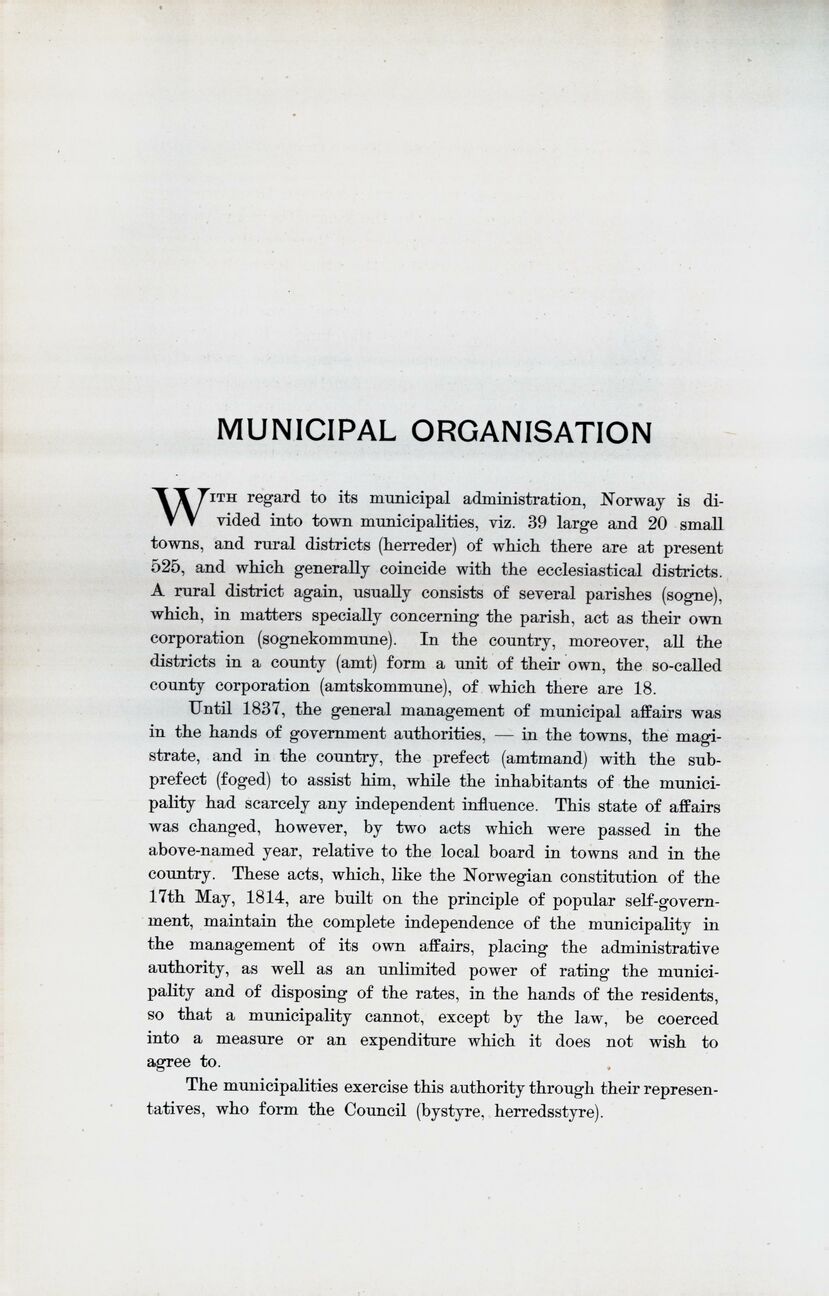
Full resolution (JPEG)
- On this page / på denna sida
- Municipal Organisation, by U. F. C. Krohn

<< prev. page << föreg. sida << >> nästa sida >> next page >>
Below is the raw OCR text
from the above scanned image.
Do you see an error? Proofread the page now!
Här nedan syns maskintolkade texten från faksimilbilden ovan.
Ser du något fel? Korrekturläs sidan nu!
This page has been proofread at least once.
(diff)
(history)
Denna sida har korrekturlästs minst en gång.
(skillnad)
(historik)
MUNICIPAL ORGANISATION
With regard to its municipal administration, Norway is
divided into town municipalities, viz. 39 large and 20 small
towns, and rural districts (herreder) of which there are at present
525, and which generally coincide with the ecclesiastical districts.
A rural district again, usually consists of several parishes (sogne),
which, in matters specially concerning the parish, act as their own
corporation (sognekommune). In the country, moreover, all the
districts in a county (amt) form a unit of their own, the so-called
county corporation (amtskommune), of which there are 18.
Until 1837, the general management of municipal affairs was
in the hands of government authorities, — in the towns, the
magistrate, and in the country, the prefect (amtmand) with the
sub-prefect [[** sjk bindestrek]] (foged) to assist him, while the inhabitants of the
municipality had scarcely any independent influence. This state of affairs
was changed, however, by two acts which were passed in the
above-named year, relative to the local board in towns and in the
country. These acts, which, like the Norwegian constitution of the
17th May, 1814, are built on the principle of popular
self-government, maintain the complete independence of the municipality in
the management of its own affairs, placing the administrative
authority, as well as an unlimited power of rating the
municipality and of disposing of the rates, in the hands of the residents,
so that a municipality cannot, except by the law, be coerced
into a measure or an expenditure which it does not wish to
agree to.
The municipalities exercise this authority through their
representatives, who form the Council (bystyre, herredsstyre).
<< prev. page << föreg. sida << >> nästa sida >> next page >>
Project Runeberg, Tue Mar 11 10:44:48 2025
(aronsson)
(diff)
(history)
(download)
<< Previous
Next >>
https://runeberg.org/norparis/0200.html



